Understanding the 5 Ohm Resistor: A Comprehensive Guide
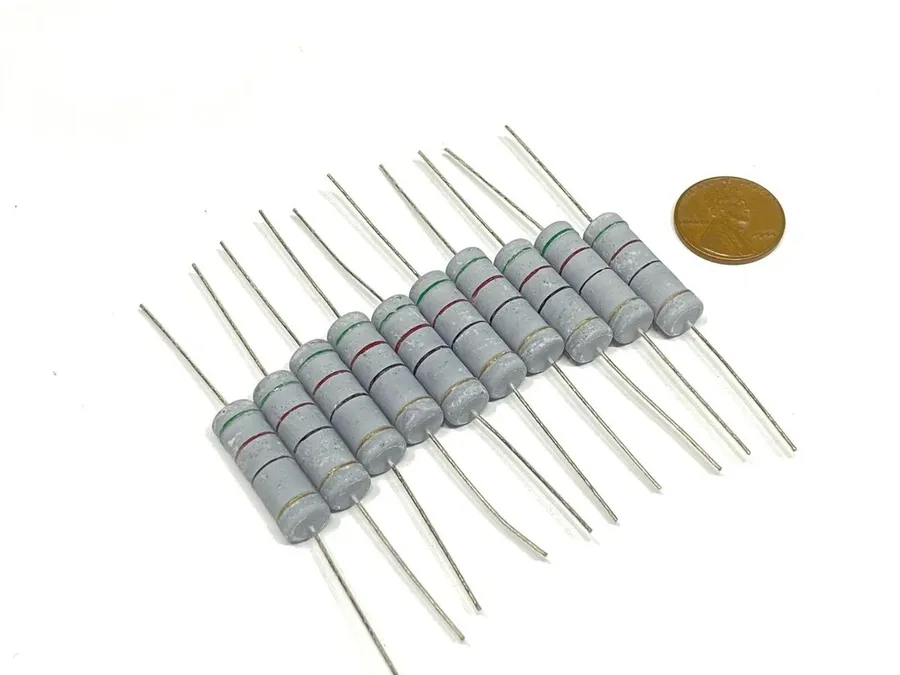
Imagine a tiny component, often overlooked, playing a critical role in countless electronic devices – that's the 5 ohm resistor. Much like a traffic regulator in a city's network, the 5 ohm resistor manages the flow of electrical current in circuits, ensuring optimal performance and preventing damage. From the simple LED in your remote control to the complex circuitry in industrial equipment, 5 ohm resistors are ubiquitous. This article serves as your definitive guide to 5 ohm resistors, covering their types, uses, and how to make the best use of them for your electronic projects.
What is a 5 Ohm Resistor?

A 5-ohm resistor is a fundamental electronic component designed to impede the flow of electrical current by a specific amount, in this case, five ohms. Its core function is to introduce a defined resistance within an electrical circuit, thereby controlling current flow and enabling stable operation. This resistance is a property of the material and geometry of the resistor, opposing the movement of electrons, and its value is crucial in setting up the required operating conditions for electronic devices.
Electrical resistance, measured in ohms (Ω), is the opposition that a material offers to the flow of electric current. In a circuit, resistors are used to limit current, divide voltage, and provide the required signal levels for other components. The 5-ohm resistor specifically provides a moderate level of impedance, and is common in various electronic applications requiring this specific value to achieve desired performance.
Types of 5 Ohm Resistors
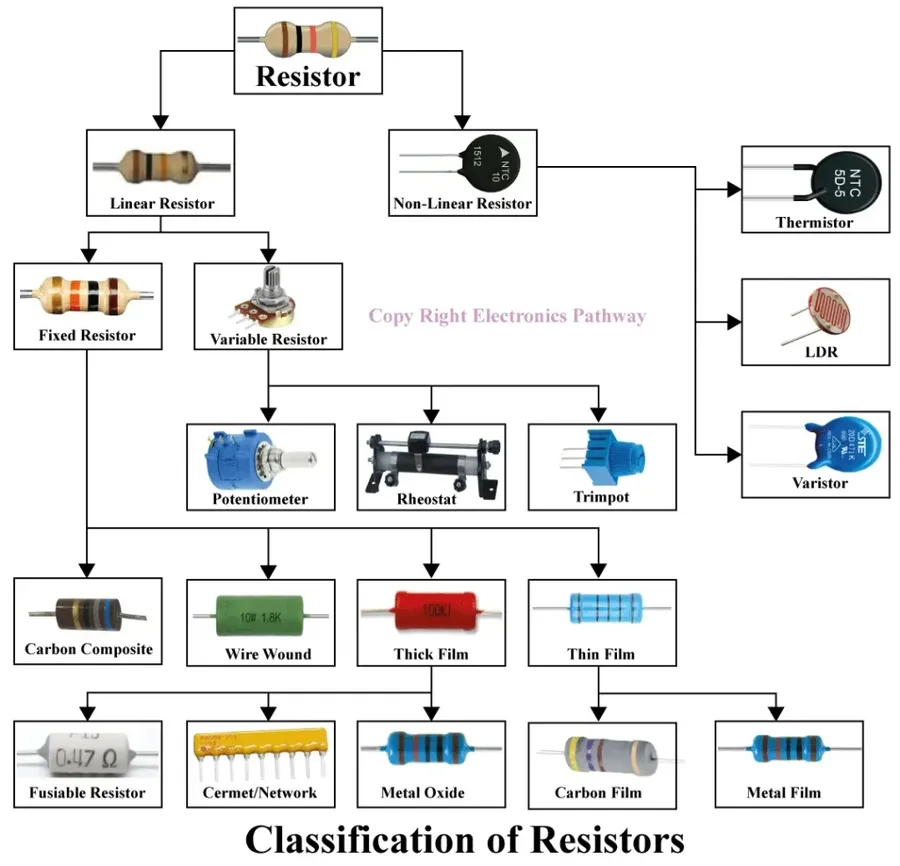
5 Ohm resistors, while unified by their resistance value, manifest in several types, each tailored for specific applications based on material, performance, and power handling needs. Understanding these variations is crucial for effective circuit design and implementation.
| Resistor Type | Material | Performance Characteristics | Power Handling | Typical Applications |
|---|---|---|---|---|
| Wire-Wound | Metallic wire (e.g., Nichrome) wound around a ceramic core | High precision, low temperature coefficient, good stability | High, generally from 1W to several hundred watts | Power supplies, high-current applications, precision instrumentation |
| Metal Film | Thin metal film deposited on a ceramic substrate | Good precision, low noise, good temperature stability | Low to medium, typically up to a few watts | General purpose applications, signal processing, audio circuits |
| Carbon Film | Thin film of carbon deposited on a ceramic substrate | Moderate precision, moderate temperature stability | Low, typically up to a few watts | General purpose applications, suitable for cost-sensitive designs |
| Carbon Composition | Carbon powder mixed with a binder and molded into a cylindrical shape | Robust, can withstand high surge currents | Low to medium, typically up to a few watts | High-voltage applications, surge protection |
| Ceramic (Cement) | Wire wound with ceramic coating | High-power applications | High, typically up to 100 watts | High-power applications, suitable for chassis mounting |
5 Ohm Resistor Color Code
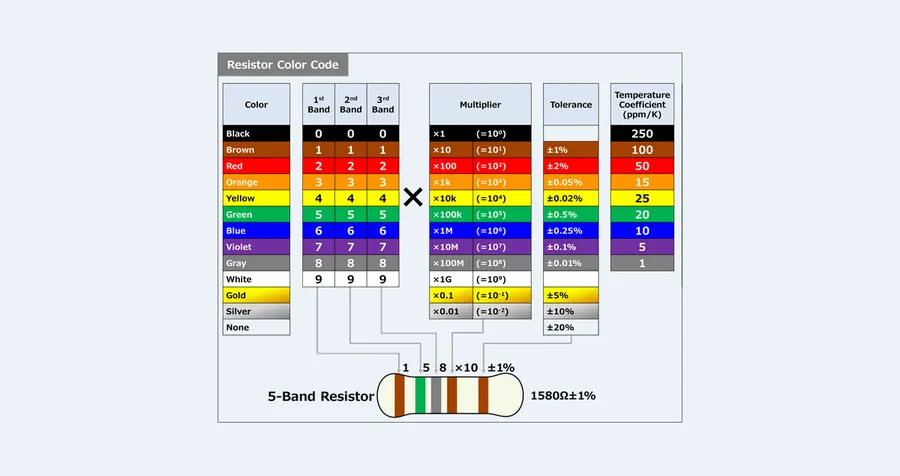
The color code on a 5 Ohm resistor is a standardized system to identify its resistance value. These color bands, each representing a numerical value, allow for quick and accurate identification without needing a multimeter. This method is particularly useful in circuit design and troubleshooting.
| Color | 1st Band | 2nd Band | Multiplier | Tolerance |
|---|---|---|---|---|
| Black | 0 | 0 | 1 | N/A |
| Brown | 1 | 1 | 10 | ±1% |
| Red | 2 | 2 | 100 | ±2% |
| Orange | 3 | 3 | 1,000 | N/A |
| Yellow | 4 | 4 | 10,000 | N/A |
| Green | 5 | 5 | 100,000 | ±0.5% |
| Blue | 6 | 6 | 1,000,000 | ±0.25% |
| Violet | 7 | 7 | 10,000,000 | ±0.1% |
| Gray | 8 | 8 | N/A | ±0.05% |
| White | 9 | 9 | N/A | N/A |
| Gold | N/A | N/A | 0.1 | ±5% |
| Silver | N/A | N/A | 0.01 | ±10% |
For a standard 4-band resistor, the first two bands represent the first two digits of the resistance value, the third band is the multiplier, and the fourth band indicates the tolerance. However, 5-band resistors offer higher precision and have three significant figures, and one multiplier band, and one tolerance band. To identify a 5 Ohm resistor, you need to determine the color for each band in sequence.
Since 5 ohm is a simple value, it can be represented by a 4-band or 5-band resistor. A 5 ohm resistor would typically be coded as follows:
- 4-Band Resistor:
The 4-band color code for a 5 ohm resistor is: Green (5), Black (0), Gold (0.1 multiplier), and then the tolerance band (e.g. Gold for ±5%). It is also possible for 5 ohm to be coded as Green, Black, Black, and a tolerance band, if the multiplier band is 1 - 5-Band Resistor:
The 5-band code would be Green (5), Black (0), Black (0), Silver (0.1 multiplier), and the tolerance band (e.g., Brown for ±1%). In the instance where the multiplier is 1 the 5 band resistor would be coded as Green, Black, Black, Black, and the tolerance band.
Understanding and correctly interpreting the color code is crucial for circuit building and maintenance to avoid errors that could lead to equipment malfunction or damage. Always double-check the color code to ensure the correct resistor is used in a circuit.
Power Rating and Application
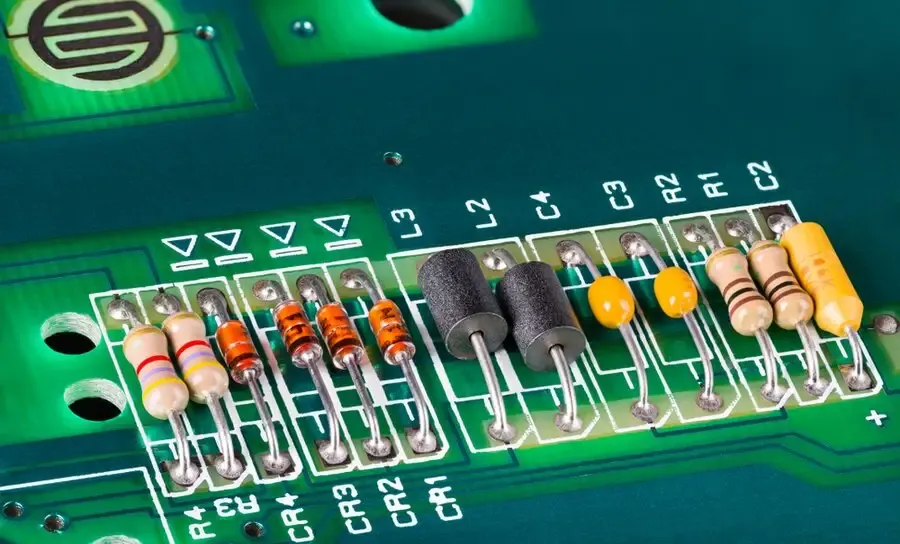
The power rating of a resistor is a critical specification that dictates the maximum amount of power it can dissipate without damage. Selecting the correct power rating for a 5-ohm resistor is crucial for circuit reliability and longevity. Insufficient power rating can lead to resistor failure due to overheating, while an excessively high rating adds unnecessary cost and size.
Power dissipation in a resistor is calculated using Joule's Law: P = I²R or P = V²/R, where 'P' is power in watts, 'I' is current in amperes, 'R' is resistance in ohms, and 'V' is voltage in volts. For a 5-ohm resistor, if the current is 1 amp, the power dissipated is 5 watts, and if the voltage is 5 volts, the power dissipated is also 5 watts. When selecting a 5 ohm resistor, ensure its power rating is above the anticipated power dissipation, usually by a safety factor of 2 or more, to allow for variations and transients.
| Application | Typical Power Dissipation | Recommended Power Rating for 5 Ohm Resistor |
|---|---|---|
| LED current limiting | 0.1 to 0.5 W | 1 W (at least) |
| Audio circuit | 0.25 to 1 W | 2 W (at least) |
| Motor control circuit | 1 to 5 W | 10 W (at least) |
| Power supply filtering | 2 to 10 W | 20 W (at least) |
In practical applications, 5-ohm resistors are used in scenarios requiring moderate current limiting, voltage division, or current sensing. Examples include current limiting resistors for LEDs (where lower power ratings are usually sufficient), in audio circuits as part of impedance matching networks (typically requiring higher wattage ratings), in motor control circuits for sensing current (requiring moderate to high wattage ratings), and in power supplies for load applications (which may require high wattage ratings). Always calculate or simulate power dissipation to match your application requirements, and adhere to resistor power rating specifications to avoid malfunctions.
5 Ohm Resistors in Series and Parallel Circuits
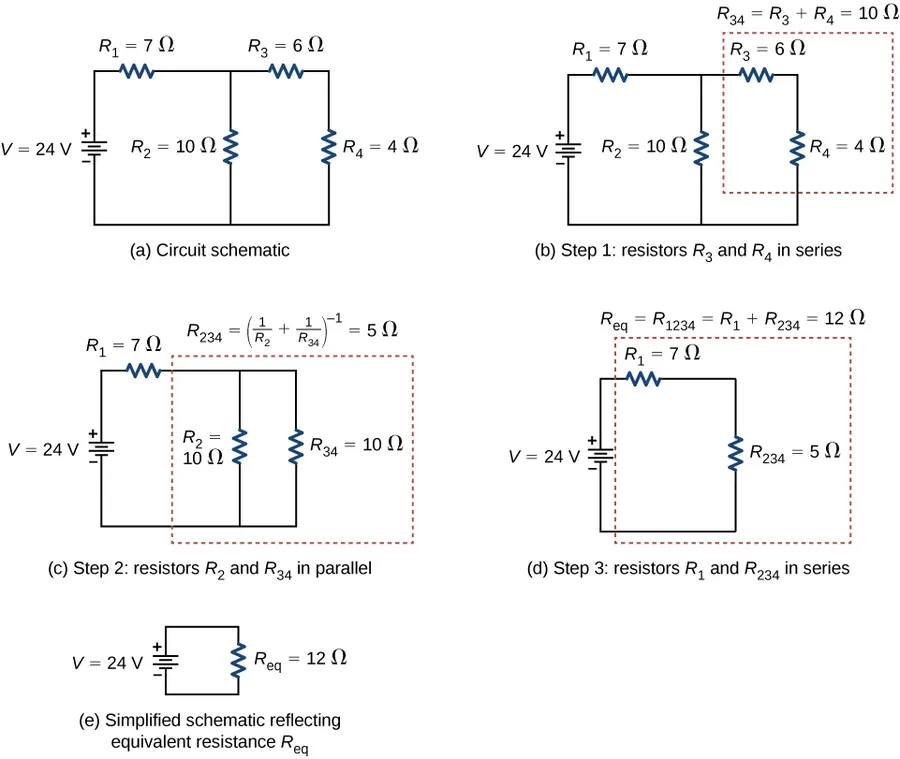
Understanding how 5 ohm resistors behave in series and parallel configurations is crucial for effective circuit design. The total resistance, and thus the current and voltage distribution, changes depending on the connection method, necessitating careful calculation and planning.
| Configuration | Total Resistance Formula | Current Behavior | Voltage Behavior |
|---|---|---|---|
| Series | R_total = R1 + R2 + ... + Rn | Same current through all resistors | Voltage is divided across resistors |
| Parallel | 1/R_total = 1/R1 + 1/R2 + ... + 1/Rn | Current is divided across resistors | Same voltage across all resistors |
Let's delve deeper into these configurations.
In a series circuit, resistors are connected end-to-end, forming a single path for current to flow. Consequently, the current is the same through each resistor, and the total resistance is the sum of individual resistances. Consider two 5 ohm resistors in series; the total resistance is simply 5 ohms + 5 ohms = 10 ohms. Crucially, the voltage is divided across each resistor based on its resistance value.
In contrast, in a parallel circuit, resistors are connected side-by-side, providing multiple paths for current. The total resistance of parallel resistors is less than that of any single resistor. The reciprocal of the total resistance is equal to the sum of the reciprocals of the individual resistances. For two 5 ohm resistors in parallel, the total resistance is calculated as follows: 1/R_total = 1/5 + 1/5, giving R_total = 2.5 ohms. The key point here is that the voltage across each resistor in a parallel circuit is the same, but the current divides across the branches in inverse proportion to the resistance.
Understanding the series and parallel concepts is paramount for predicting circuit behavior, particularly for calculations and designs involving multiple 5 ohm resistors. Misinterpreting these connections can lead to inaccurate voltage and current predictions, and potentially damaging the electronic circuits.
Applications of a 5 Ohm Resistor

The 5-ohm resistor, while seemingly a specific value, finds broad application across diverse industries due to its ability to manage current flow and heat dissipation within electrical circuits. Its use cases range from delicate signal processing to robust power management, highlighting its versatility and importance.
- Audio Systems
5-ohm resistors are frequently used in audio circuits, including speaker systems and amplifiers. They help in impedance matching between different components, ensuring optimal signal transfer and preventing distortion. Specifically, they might be used in crossover networks or as part of attenuator circuits to control volume levels or channel balance. - LED Lighting
In LED lighting systems, 5-ohm resistors are crucial for current limiting. LEDs are current-driven devices, and without proper current regulation, they can overheat and fail. A 5-ohm resistor can help control the current flow through the LED, preventing damage and ensuring consistent brightness. This application is common in both residential and industrial lighting designs. - Motor Control
5-ohm resistors play a role in motor control circuits, particularly in low-power DC motors. They can be used to limit starting current, reducing the stress on motor windings and other components. They may also help in controlling motor speed, allowing designers to fine-tune motor performance. - Power Supplies
In power supplies, these resistors can function as current-sensing elements, enabling monitoring and control of the current being supplied. These current sensing resistors often need to have low resistance values such as 5 ohms to minimize power loss while providing a suitable voltage drop that can be accurately measured. - Automotive Electronics
The automotive sector uses 5-ohm resistors in various control systems and sensor circuits. They are often part of signal conditioning circuits for sensors providing data for engine management and other electronic control units. Their robust design helps them withstand the harsh operating conditions found in vehicles. - Signal Conditioning
In various signal conditioning circuits, a 5-ohm resistor provides a small but essential impedance. It can be used to prevent signal reflections, act as a termination resistor on communication lines, or to balance current flow within sensitive circuits. This is common in various measurement and control systems. - Circuit Testing and Prototyping
5-ohm resistors are a standard value used in circuit testing and prototyping. Due to their availability and consistent electrical characteristics, they are a good starting point in design evaluations and validation, allowing engineers to quickly implement and test various circuit designs.
Frequently Asked Questions About 5 Ohm Resistors
This section addresses common questions regarding 5 ohm resistors, providing clear and concise answers to aid in your understanding and application of these components in electronic circuits. We aim to clarify typical usage scenarios and address potential user concerns.
- What is the current in a 5 ohm resistor?
The current through a 5 ohm resistor depends on the voltage applied across it. Using Ohm's Law (I = V/R), if you know the voltage (V), you can calculate the current (I). For example, with a 10V supply, the current would be 2 amps (10V / 5 ohms = 2A). The current is directly proportional to the voltage. - Is a 5 ohm resistor commonly available?
Yes, 5 ohm resistors are readily available and a standard value. They are manufactured in various power ratings and physical sizes. You can find them in both through-hole and surface mount packages, and are stocked by most electronic component distributors. - What is the color code for a 5 ohm resistor?
A 5 ohm resistor typically uses a color code of Green, Black, Gold, and Gold in a four-band configuration. The first band (Green) represents the first digit (5), the second band (Black) represents the second digit (0), the third band (Gold) represents the multiplier (x0.1), and the fourth band (Gold) represents the tolerance (+/- 5%). - What happens if I use a resistor with the wrong resistance value?
Using a resistor with the wrong resistance value can lead to several issues. If the resistance is too low, it can allow excessive current to flow, potentially damaging other components in the circuit, causing overheating, or even causing a fire. If the resistance is too high, the current flow will be restricted, preventing the circuit from functioning correctly or failing to achieve the intended design parameters. - Can a 5 ohm resistor handle high power?
The power handling capability of a 5 ohm resistor is determined by its power rating, not just its resistance. You must select a resistor with a power rating that is equal to or greater than the expected power dissipation in the circuit. Using a resistor below its power rating causes it to overheat and fail prematurely. Check the datasheet or the product description for its specified power rating. - How does temperature affect the resistance of a 5 ohm resistor?
The resistance of most 5 ohm resistors will change slightly with temperature. The effect is described by the Temperature Coefficient of Resistance (TCR). Some types, like metal film resistors, have a very low TCR, meaning their resistance remains relatively stable. However, other types can exhibit significant changes in resistance at higher temperatures. For temperature-sensitive circuits, consider resistors with low TCR. - What are the common applications for a 5 ohm resistor?
5 ohm resistors are used in various applications like current limiting, voltage division, LED driving, and in some cases, as small load resistors for testing circuits. They are used in many applications within audio amplifiers and other areas of signal processing where very fine control of current and voltage are required.
Where to Buy 5 Ohm Resistors
Sourcing a 5-ohm resistor involves navigating various options, each offering different advantages in terms of availability, cost, and selection. The ideal choice depends on project requirements, desired quantities, and time constraints.
- Online Retailers
Online marketplaces, such as Amazon, eBay, Mouser Electronics, and Digi-Key, provide a wide selection of 5-ohm resistors. These retailers often offer detailed product specifications, customer reviews, and competitive pricing. They cater to both individual hobbyists and large-scale industrial buyers. - Physical Stores
Local electronics supply stores or hardware stores may stock 5-ohm resistors. While these stores may have a more limited selection compared to online retailers, they offer the advantage of immediate availability and the ability to physically inspect the product before purchase, particularly for urgent or small-scale projects. - Direct from Manufacturers
Purchasing directly from resistor manufacturers, such as Vishay, Bourns, or Ohmite, is generally reserved for large volume requirements or custom specifications. This ensures quality and consistency, but typically involves lead times and higher minimum order quantities. It is best for specific requirements of high-volume production or specialized components. - Specialty Component Distributors
Specialized component distributors focus on particular industries or specific types of electronic components. These distributors often have technical experts who can provide additional support and guidance, and are helpful for those requiring components for professional or specialized applications. Examples are Arrow Electronics, Avnet.
| Factor | Online Retailers | Physical Stores | Direct from Manufacturers | Specialty Component Distributors |
|---|---|---|---|---|
| Selection Variety | Extensive | Limited | Limited (usually custom) | Moderate (focus area) |
| Price | Competitive | Generally Higher | Variable (volume based) | Competitive |
| Availability | Wide, shipped | Immediate (local availability) | Lead times (volume dependent) | Moderate |
| Support | Limited | Moderate | High (technical) | High (technical focus) |
| Quantity | Flexible (from single units to bulk) | Limited | Bulk (large minimum order) | Flexible |
When selecting a supplier, it's crucial to verify the authenticity of the components and compliance with relevant standards. Ensure the resistor's specifications (resistance value, tolerance, power rating, temperature coefficient) match your project's requirements. Considering all of these factors leads to a more reliable purchase.
Practical Considerations and Handling
Proper handling of 5 ohm resistors during installation and use is crucial to ensure optimal performance and longevity. This section outlines key considerations, focusing on soldering techniques and preventative measures against damage to preserve their functionality within electrical circuits.
- Soldering Techniques
Use a soldering iron with adjustable temperature to avoid overheating the resistor. Apply solder to the connection point, not directly to the resistor body. Ensure clean solder joints for optimal conductivity. Consider using a heat sink during soldering to reduce heat exposure. - Avoid Mechanical Stress
Resistors, particularly those with fragile lead wires, should be handled with care to prevent bending or breaking the leads. Do not bend leads near the body, and avoid sharp angles when mounting. Use proper lead bending tools for precision and consistency. Do not force resistors into tight spaces that might cause physical strain. - Preventing Overheating
Resistors are designed to dissipate heat within their power rating limits; however, excessive heat beyond rated specifications can damage them. Ensure proper ventilation to facilitate heat dissipation, and choose appropriate heat sink if the heat exceeds design specifications. Avoid operating resistors continuously close to their maximum power rating. - Correct Orientation
Some resistors are polarity sensitive. Ensure correct placement in the circuit to prevent unintended consequences. Although a 5 ohm resistor does not have a specific polarity, it is important to correctly align axial components with other polarized elements in a circuit. - Storage
Store resistors in a dry, cool environment away from direct sunlight and corrosive chemicals to prevent degradation. Anti-static bags are advisable to protect sensitive electronic components like resistors from electrostatic discharge. - Inspection
Visually inspect resistors before and after installation for any signs of physical damage, such as cracks, burns, or deformed leads. Use a multimeter to test resistance value before integration into a circuit, to guarantee that resistors adhere to specific component values.
The 5 ohm resistor, despite its diminutive size, plays a critical role in the smooth operation of a vast array of electronic devices. Understanding its characteristics and applications is vital for anyone working with electronics. Whether you are using the 5 ohm resistor in simple hobby projects or complex industrial applications, a solid understanding of its fundamental role in electrical circuits is key. As technology advances, the 5 ohm resistor will continue to be an essential component, adapting and evolving to meet new demands. Remember to always check the color code, and the appropriate power rating to ensure optimal performance and safety in your circuits.
 AnyPCBA
AnyPCBA